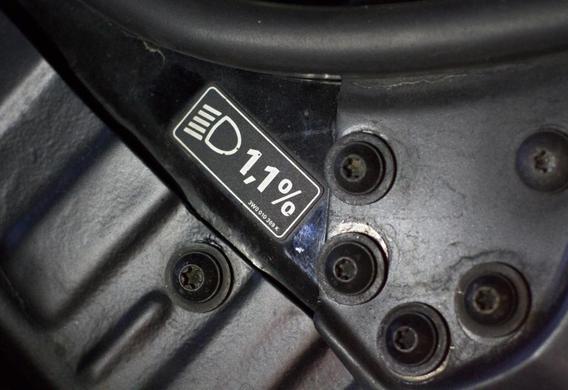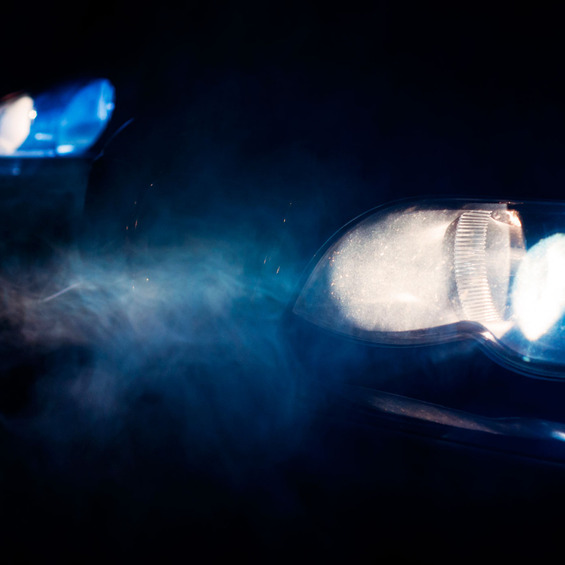
Manufacturers are manufacturing cars with adjusted factory optics, but after a certain amount of time it is necessary to adjust or adjust. The question of how to regulate the headlamps also arises after any emergency, repair of the bodywork associated with the replacement of the body parts of the front ring of the car, and after replacing the spring and the suspension pillar.
The headlamp setting is necessary for the correct direction of the luminous flux to the carriageway and edge of the shoulder. It is not only comfortable to move, but also, most importantly, safety in difficult weather conditions, at dusk and in the dark.
How do I regulate the headlights? You can do this on your own, and you can trust this operation to the auto-service wizards. Blago, they have all the necessary equipment.
In the process of operating the vehicle headlamps, the headlights change slightly and require, for the most part, only a slight adjustment. The headlights can be adjusted both on their own and on specialized auto-services equipped with the necessary modern equipment.
To adjust the headlamp with their hands
It is possible to adjust in modern cars without dismantling the head optics-by means of adjusting screws (plastic handles) in the rear of the headlamps. They can be used to lift or lower the vertical headlights (up-down) and to turn the light beam to the center or to the center of the headlamp (right-to-left).
Depending on the design, a Phillips head screwdriver (long or short) may also need to be adjusted by its own hands, and on some models it may be a hexagon or a tort or a keysical key.
Self-adjustment order
The alignment of headlamps for all motor vehicles is the same: it does not matter whether you regulate the VAZ 2107 or Renault Logan. To adjust the headlights with their hands, you need a flat surface on the street or in the garage and any surface (a wall of the house, a garage, a solid fence, etc.) on which you can place an improvised calibration screen.
The vehicle is set at a distance of 5 metres from the wall. The screen is marked on the wall. The first is the center-line 0, which must be the same as the longitudinal axis of the car.
Then the distance between the centres of headlamps shall be measured and transferred to the screen in the form of two vertical lines-L (centre of the left headlamp) and P (centre of the right lamp).
It is then necessary to measure the height of the centres of headlamps from the ground or floor, and at that height to draw a horizontal line H. However, the height of the centre of the left and right headlights may be observed.
In vehicles with an electro or hydraulic adjuster, the governor must be set to the "0" position; otherwise, the adjuster will return the adjustment automatically.
The dipped-beam headlamps shall then be activated. For each headlamp, it is better to separate, adjust the position of the headlamp by closing the second headlamp by any manual material that does not emit light or lifts the power.
The light beam of the fog lamps shall be adjusted only in height
Headlamps can be considered as adjusted when the upper edges of the left side of their luminous spots coincide with the horizontal H (height of the centre of the headlamp from the road) and the vertical lines L and P (centres of headlamps) will pass through the intersection of sloping and horizontal points of light.

If the vehicle is equipped with fog-lamps, their light beam is only adjustable for height. The adjustment shall be achieved so that the top of their light spots is at or slightly below the height of the H line.
Correctly defined and regulated fog lamps will be less representative of the fog by the necessary angle. In addition, "anti-manki" makes bumps on the road with contrast, creating a shadow, highlighting them side by side.
headlamp adjuster
When the boot is loaded (especially beyond the acceptable limit), the stern of the vehicle "crouts", while the fore part rises-the passing lamps are out of control and dazzle the oncoming drivers. When switching to "distant", the raised headlights illuminate not the road surface, but the tops of the trees.
If the boot of the car is full, it is better to adjust the headlamps before the trip and return the previous settings after unloading
In this case, before the journey, corrective adjustment of the headlamps shall be required for the safety and security of the other traffic participants. For these purposes, modern cars are equipped with a corrector lamp (VAZ-2110, for example, a hydroproofreader is installed, which changes the angle of the headlights depending on the degree of loading of the machine).
Dipped-beam headlamp
Depending on the height of the centres of the headlamps, the downward inclination of the cut-off is adjusted, and this value is decisive for adjustment.
This is explained by the position that the passing lamp is structurally a cap over the visor of the filament that limits the luminous flux.
This visor can be compared to the visor of the summer cap, which closes the top eye view: to see something above the visor's cap, you need to lift your head up. The same is the case with the passing lamp.

Reference luminous flux
The light beam of correctly regulated passing-beam shall be directed downwards at a certain angle, with the value of this angle different for each car.
For example, the angle of 1.0 per cent (usually near the headlamp or on the headlight) means that, when the vehicle is removed from the headlights of a motor vehicle by one metre, its "cut-off" shall be reduced by 1 cm.
For example, if the height of the headlamps N = 0.8 m and the inclination of 1.0 per cent, the cut-off shall be "touching" the road at a distance of 80 m. When the slope angle is, for example, 1.5 per cent, the cut-off line will be only 53 m.
This angle allows the road surface to be spaced evenly over the distance to both the nearest and the long beam sections of the beam are equally lit. But this form of beam can only be obtained with the right adjustment.
The passing beam also includes illumination of the right shoulder, pedestrians and road signs. At the same time, even on the roughness of the road, the car, "playing" the bodywork, should not blind the drivers of oncoming cars.
The light beam must be well lit in the distance, which is at the exact angle of its installation. As practice shows, even a slight disturbance in the alignment of the head optics leads to inefficient lighting of the road and, in addition, to the blinding of oncoming cars. Alternatively, the reverse-effect of the lamps is a bright spot downward, which is hardly visible from the car occupant.
Professional alignment of headlights in service
In case of independent adjustment of headlamps without special equipment, it is most often impossible to achieve the optimum level of light beam inclination. This can be achieved, but it will take several additional adjustments, each time it is necessary to travel on the road to obtain the result and compare it with the previous one.

Qualitative tester of lamps on specialized STOs is setting the head optics, taking into account all constructional features of the car "Left" lamps and difficulties in their operation
"Left" lamps and difficulties in their operation
Today, a lot has appeared under the trendy xenon: producers paint blue lights and increase their power to make the xenon beam as efficient as possible. Such lamps are not designed for standard factory optics and, in addition to leading to frequent overheating of optics, also dazzling the drivers of oncoming cars. Such pseudo-optics is extremely difficult to regulate and better refuse to use it.
In general, for safety of traffic and comfort, it is more beneficial to turn to the services of professionals who adjust the headlamps to meet all the requirements of the manufacturer. In addition, such a service is usually expensive.







